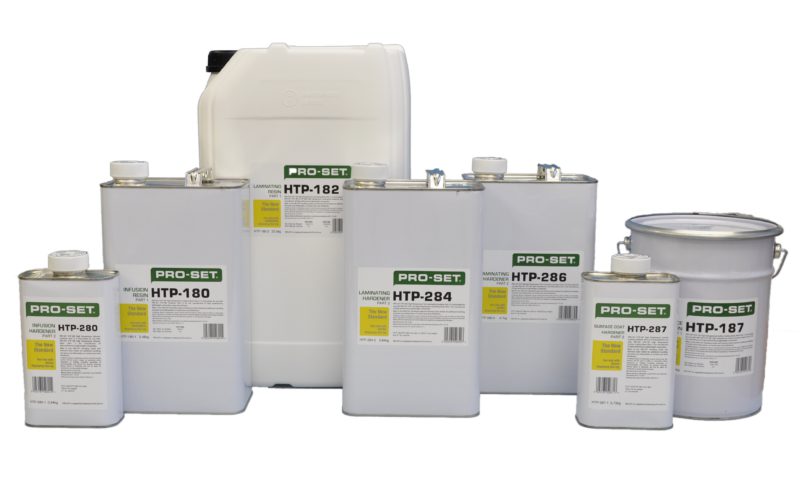Standard Epoxies
High Temp Epoxies

PRO-SET High-Temperature Epoxies are a system of high-performance epoxies for synthetic composite mould and part manufacture.
The PRO-SET High-Temperature system consists of a Surface Coat Epoxy, Laminating Epoxy and an Infusion Epoxy. When combined to manufacture composite parts, they can be demoulded after 24-48 hours at room temperature before a free-standing postcure.
The Tg of this system is as high as 149°C with a proper postcure. It has low shrinkage, excellent temperature stability and part cosmetics.
High-Temp Infusion Resin
- HTP-180 High-Temp Infusion Resin (elevated cure)
High-Temp Infusion Hardener
- HTP-280 High-Temp Infusion Hardener
High-Temp Laminating Resin
- HTP-182 High-Temp Laminating Resin
High-Temp Laminating Hardener
- HTP-284 High Temp Laminating Fast Hardener
- HTP-286 High Temp Laminating Slow Hardener
High-Temp Surface Coat Resin
- HTP-187 High-Temp Surface Coat Resin*
High-Temp Surface Coat Hardener
- HTP-287 High-Temp Surface Coat Hardener*
See Technical Data Sheets in the table below for details on PRO-SET High-Temp resin and hardener combinations.
Standard High-Temp Epoxies — Technical Data
| System | Epoxy Type | Cure Speed |
|---|---|---|
| HTP-180 / HTP-280 | High-Temp Infusion | Medium |
| HTP-182 / HTP-284 | High-Temp Laminating | Fast |
| HTP-182 / HTP-286 | High-Temp Laminating | Slow |
| HTP-187 / HTP-288* | High-Temp Surface Coat (black) | Slow |
*Application Tips for HTP 187-287 High-Temp Surface Coat only
-
- Always evaluate mould release on a test panel that is characterized with your post-cure schedule.
- Apply product using stiff bristle brush. Cut bristles to half of their original length to increase brush stiffness.
- When applying, brush in an alternating pattern of 0 and 90 degrees to a thickness of 10-12 mils.
- Let surface coat cure between each application and prior to lamination. Wash with water and a Scotch Brite Pad to remove amine blush. IMPORTANT! Blush may not be visible and can occur while product is still tacky.
- To repair finished moulds, grind away damaged Surface Coat and grind a “Vee” into any cracks. Sand areas with 80-grit sandpaper and fill with Surface Coat. Post-cure as required.




